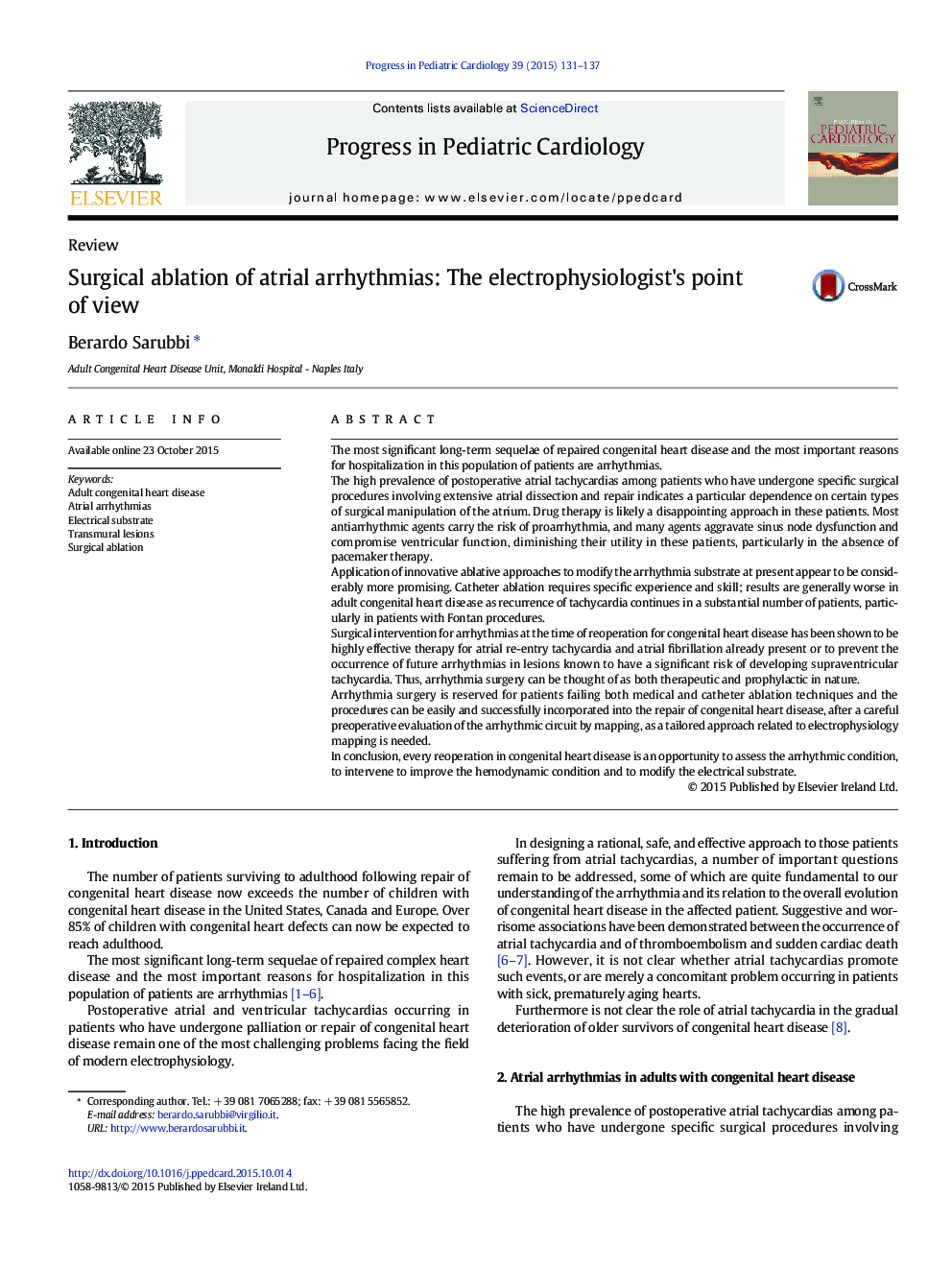| Article ID | Journal | Published Year | Pages | File Type |
|---|---|---|---|---|
| 3007430 | Progress in Pediatric Cardiology | 2015 | 7 Pages |
The most significant long-term sequelae of repaired congenital heart disease and the most important reasons for hospitalization in this population of patients are arrhythmias.The high prevalence of postoperative atrial tachycardias among patients who have undergone specific surgical procedures involving extensive atrial dissection and repair indicates a particular dependence on certain types of surgical manipulation of the atrium. Drug therapy is likely a disappointing approach in these patients. Most antiarrhythmic agents carry the risk of proarrhythmia, and many agents aggravate sinus node dysfunction and compromise ventricular function, diminishing their utility in these patients, particularly in the absence of pacemaker therapy.Application of innovative ablative approaches to modify the arrhythmia substrate at present appear to be considerably more promising. Catheter ablation requires specific experience and skill; results are generally worse in adult congenital heart disease as recurrence of tachycardia continues in a substantial number of patients, particularly in patients with Fontan procedures.Surgical intervention for arrhythmias at the time of reoperation for congenital heart disease has been shown to be highly effective therapy for atrial re-entry tachycardia and atrial fibrillation already present or to prevent the occurrence of future arrhythmias in lesions known to have a significant risk of developing supraventricular tachycardia. Thus, arrhythmia surgery can be thought of as both therapeutic and prophylactic in nature.Arrhythmia surgery is reserved for patients failing both medical and catheter ablation techniques and the procedures can be easily and successfully incorporated into the repair of congenital heart disease, after a careful preoperative evaluation of the arrhythmic circuit by mapping, as a tailored approach related to electrophysiology mapping is needed.In conclusion, every reoperation in congenital heart disease is an opportunity to assess the arrhythmic condition, to intervene to improve the hemodynamic condition and to modify the electrical substrate.
